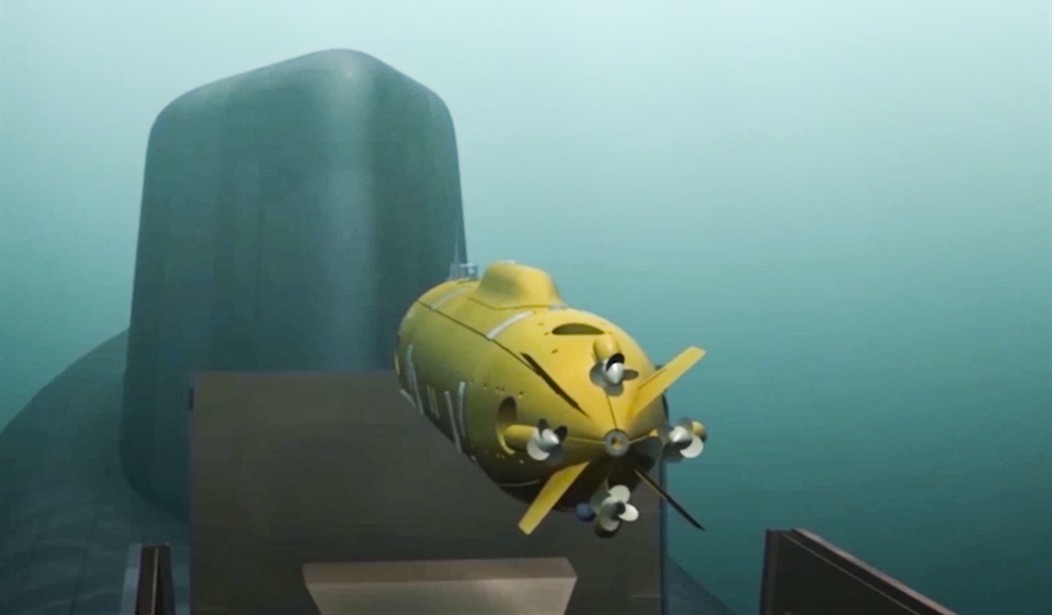One of the shortcomings of maps showing the potential area of naval confrontation between China, on the one hand, and the U.S., Japan, and Australia on the other, is that they commonly depict the surface of the sea. But underneath the waves lies an unseen world of communications cables through which the information economy flows and to which conflict will naturally come.
“People think that data is in the cloud, but it’s not,” said Jayne Stowell, who oversees construction of Google’s undersea cable projects. “It’s in the ocean.”…Content providers like Microsoft, Google, Facebook and Amazon now own or lease more than half of the undersea bandwidth. …
Countries view the undersea cables as critical infrastructure and the projects have been flash points in geopolitical disputes. Last year, Australia stepped in to block the Chinese technology giant Huawei from building a cable connecting Australia to the Solomon Islands, for fear it would give the Chinese government an entry point into its networks.
Above the waves ply the giant tankers and containerships on which trade depends. Below them run the currents of the digital age. The Bashi Channel , an obscure narrow channel between Taiwan and Luzon, not only carries shipping between the South China Sea and the Pacific. “The channel is also significant to communication networks. Many of the undersea cables that carry data and telephone traffic between Asian countries pass through the Bashi Channel, making it a major potential point of failure for the Internet. In December 2006, a magnitude 6.7 submarine earthquake cut several undersea cables at the same time, causing a significant communications bottleneck that lasted several weeks.”
But it is not just digital gold that courses through the depths. The great powers, especially the U.S. and China, are building undersea defense networks. Empowered by remotely controlled or autonomously directed undersea vehicles, a vast infrastructure is being created on the seafloor.
One of these platforms is the U.S. Navy’s Orca autonomous underwater vehicle. “The 51-foot-long submersible is launched from a pier and can operate autonomously while sailing up to 6,500 nautical miles without being connected to a manned mother ship, according to the Navy. Eventually, the Navy could also use the Orca XLUUV for mine countermeasures, anti-submarine warfare, anti-surface warfare, electronic warfare and strike missions, according to a Navy outline of the system’s capability development.”
Their home is the seabed. Concept papers describe plans to station Forward Deployed Energy and Communications Outposts that are basically underwater recharging stations and telephone booths that a stealthy robot fleet can use to call home without giving away their position or being limited by the low rate of acoustic signaling.
Naturally, China is doing the same thing or something similar. Its open-source equivalent of the Orca is the HSU-001. “The HSU-001 is thought to be optimized for seabed warfare.” Beijing is also thought to be building an infrastructure termed the Great Underwater Wall of China.
The Great Underwater Wall is a People’s Republic of China military program to monitor submarine, surface, and aerial vehicle activity in the seas adjacent to China. …
The system will include:
- Passive sonar systems located on the seafloor
- Active sonar systems
- Remote controlled underwater drones (UUV)
- Remotely controlled surface vessels (USV).
It’s clear that the day of robotic combat is here as indicated by the recent events in the Armenia-Azerbaijan conflict. Men and machines are likely to fight together in the new cold war. Perhaps the clearest indication of the paradigm shift was the USN’s announcement of the first-ever fleet problem exercise involving unmanned systems.
U.S. Pacific Fleet will host its most complex exercise to date involving unmanned systems, with next month’s Fleet Battle Problem exercise including unmanned aircraft on the water’s surface and in the air and USS Michael Monsoor (DDG-1001) commanding and controlling the missions.
Fleet problems have traditionally heralded changes in the Navy’s thinking about the future of warfare, often decades in advance of an actual event. For example, the role of aircraft carrier was foreseen long before WW2. “Fleet Problem V was held in March and April 1925 and simulated an attack on Hawaii. The Black force, the aggressor, was given the United States’ first aircraft carrier, Langley along with two seaplane tenders and other ships outfitted with aircraft, while the defending Blue force had no carriers”. Substitute the Monsoor for the Langley and the parallels are plain.
Naval warfare is undergoing one of its periodic revolutions, as the excellent presentation below shows. It will probably be nothing like what the average member of the public imagines. Strange that navies should grapple for depths that no man has seen, but like the torrents of data that flow through the abyss, “what is essential is invisible to the eye.”
Books: Connectography: Mapping the Global Network Revolution. It’s time to reimagine how life is organized on Earth. In Connectography, Parag Khanna guides us through the emerging global network civilization in which mega-cities compete over connectivity and borders are increasingly irrelevant. Traveling across the world, Khanna shows how twenty-first-century conflict is a tug-of-war over pipelines and Internet cables, advanced technologies and market access.
Follow Richard Fernandez at Wretchard.com










Join the conversation as a VIP Member